To celebrate the 45th anniversary of the Apollo 13 mission, Universe Today is featuring “13 MORE Things That Saved Apollo 13,” discussing different turning points of the mission with NASA engineer Jerry Woodfill.
Very quickly after the explosion of Oxygen Tank 2 in Apollo 13’s service module, it became apparent the Odyssey command module was dying. The fuel cells that created power for the Command Module were not working without the oxygen. But over in the Aquarius lunar lander, all the systems were working perfectly. It didn’t take long for Mission Control and the crew to realize the Lunar Module could be used as a lifeboat.
The crew quickly powered up the LM and transferred computer information from Odyssey to Aquarius. But as soon as they brought the LM communications system on line another problem developed.
The Apollo 13 crew couldn’t hear Mission Control.
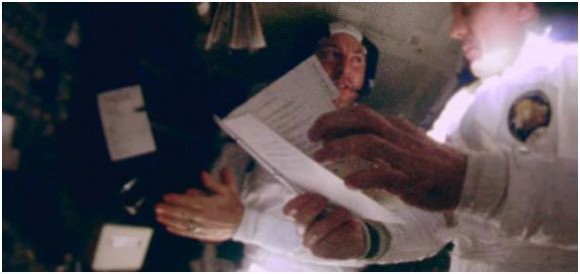
The crew radioed they were getting lots of background static, and at times, they reported communications from the ground were “unreadable.”
Additionally, the Manned Space Flight Network (MSFN) tracking stations around the world were having trouble “hearing” the Apollo 13 spacecraft’s radio broadcasting the tracking data.
“Without reliable knowledge of where the vehicle was or was going might result in disaster,” said NASA engineer Jerry Woodfill.
What was going on?
The dilemma was that two radio systems were using the same frequency. One was the transmitter from the LM’s S-band antenna. The other was the broadcast from the spent third stage of the Saturn V, known as the S-IVB.
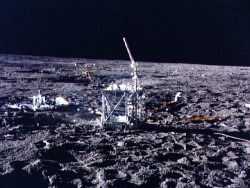
As part of a science experiment, NASA had planned for crashing Apollo 13’s S-IVB into the Moon’s surface. The Apollo 12 mission had left a seismometer on the Moon, and an impact could produce seismic waves that could be registered for hours on these seismometers. This would help scientist to better understand the structure of the Moon’s deep interior.
In Apollo 13’s nominal flight plan, the lander’s communications system would only be turned on once the crew began preparing for the lunar landing. This would have occurred well after the S-IVB had crashed into the Moon. But after the explosion, the flight plan changed dramatically.
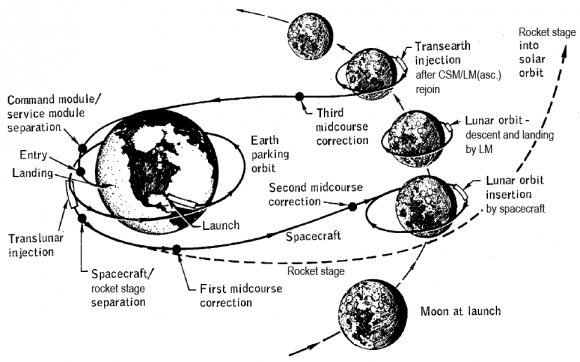
But with both the Saturn IVB and the LM’s transmitters on the same frequency, it was like having two radio stations on the same spot on the dial. Communications systems on both ends were having trouble locking onto the correct signal, and instead were getting static or no signal at all.
The Manned Space Flight Network (MSFN) for the Apollo missions had three 85 foot (26 meter) antennas equally spaced around the world at Goldstone, California, Honeysuckle Creek, Australia and Fresnedillas (near Madrid), Spain.
According to historian Hamish Lindsay at Honeysuckle Creek, there was initial confusion. The technicians at the tracking sites immediately knew what the problem was and how they could fix it, but Mission Control wanted them to try something else.
“The Flight Controllers at Houston wanted us to move the signal from the Lunar Module across to the other side of the Saturn IVB signal to allow for expected doppler changes,” Hamish quoted Bill Wood at the Goldstone Tracking Station. ”Tom Jonas, our receiver-exciter engineer, yelled at me, ‘that’s not going to work! We will end up locking both spacecraft to one up-link and wipe out the telemetry and voice contact with the crew.’”
At that point, without the correct action, Houston lost telemetry with the Saturn IVB and voice contact with the spacecraft crew.
But luckily, the big 64 meter Mars antenna at Goldstone was already being switched over to help with the Apollo emergency and “their narrower beam width managed to discriminate between the two signals and the telemetry and voice links were restored,” said Wood.
That stabilized the communications. But then it was soon time to switch to the tracking station at Honeysuckle Creek.
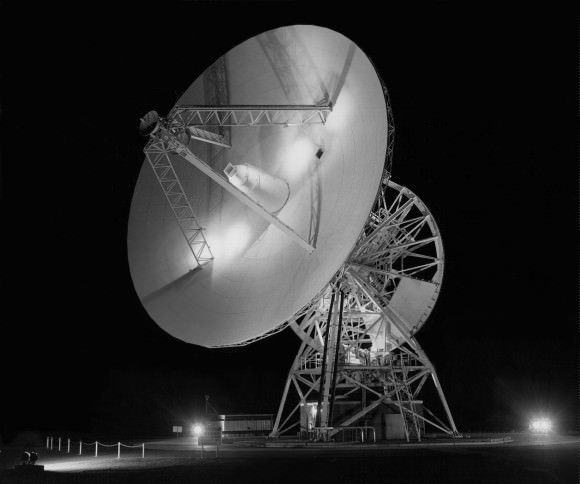
Photo by Hamish Lindsay.
There, Honeysuckle Creek Deputy Director Mike Dinn and John Mitchell, Honeysuckle Shift Supervisor were ready. Both had foreseen a potential problem with the two overlapping frequency systems and before the mission had discussed it with technicians at Goddard Spaceflight Center about what they should do if there was a communication problem of this sort.
When Dinn had been looking for emergency procedures, Mitchell had proposed the theory of getting the LM to switch off and then back on again. Although nothing had been written down, when the emergency arose, Dinn knew what they had to do.
“I advised Houston that the only way out of this mess was to ask the astronauts in the LM to turn off its signal so we could lock on to the Saturn IVB, then turn the LM back on and pull it away from the Saturn signal,” said Dinn.
It took an hour for Mission Control in Houston to agree to the procedure.
“They came back in an hour and told us to go ahead,” said Mitchell, “and Houston transmitted the instructions up to the astronauts ‘in the blind’ hoping the astronauts could hear, as we couldn’t hear them at that moment. The downlink from the spacecraft suddenly disappeared, so we knew they got the message. When we could see the Saturn IV downlink go way out to the prescribed frequency, we put the second uplink on, acquired the LM, put the sidebands on, locked up and tuned away from the Saturn IVB. Then everything worked fine.”
Dinn said they were able to “pull” the frequencies apart by tuning the station transmitters appropriately.
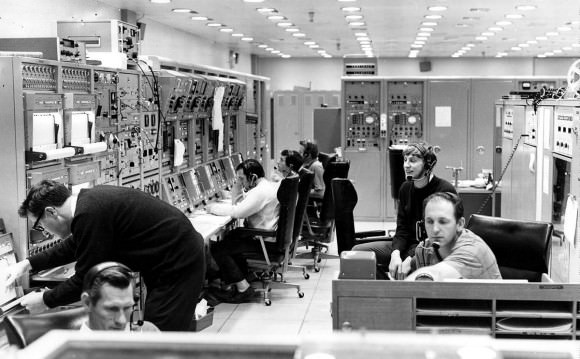
This action, said Jerry Woodfill, was just one more thing that saved Apollo 13.
“The booster stage’s radio was de-turned sufficiently from the frequency of the LM S-Band so that the NASA Earth Stations recognized the signal required to monitor Apollo 13’s orbit at lunar distances,” explained Woodfill. “This was altogether essential for navigating and monitoring the crucial mid-course correction burn which restored the free-return trajectory as well as the set-up of the subsequent PC+2 burn to speed the trip home needed to conserve water, oxygen and water stores to sustain the crew.”
You can hear some of the garbled communications and Mission Control issuing instructions how to potentially deal with the problem at this link from Honeysuckle Creek’s website.
As for the S-IVB science experiment, the 3rd stage crashed successfully on the Moon, providing some of the first data for understanding the Moon’s interior.
Later, on hearing that the stage had hit the Moon, Apollo 13 Commander Jim Lovell said, “Well, at least one thing worked on this mission!”
(Actually, in spite of the Apollo 13 accident, a total of four science experiments were successfully conducted on Apollo 13.)
In early 2010, NASA’s Lunar Reconnaissance Orbiter spacecraft imaged the crater left by the Apollo 13 S-IVB impact.
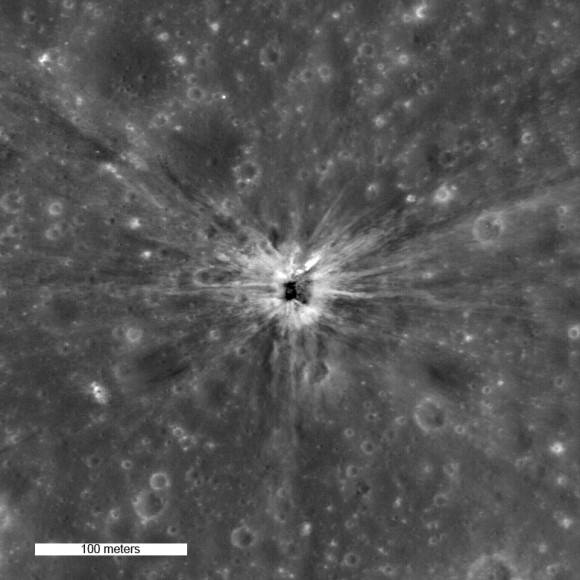
Thanks to space historian Colin Mackellar from the Honeysuckle Creek website, along with technician Hamish Lindsay and his excellent account of the Honeysuckle Creek Tracking station and their role in the Apollo 13 mission.
You can read a previous article we wrote about Honeysuckle Creek: How We *Really* Watched Television from the Moon.
Additional articles in this series:
Part 1: The Failed Oxygen Quantity Sensor
Part 2: Simultaneous Presence of Kranz and Lunney at the Onset of the Rescue
Part 3: Detuning the Saturn V’s 3rd Stage Radio
Part 4: Early Entry into the Lander
Part 5: The CO2 Partial Pressure Sensor
Part 6: The Mysterious Longer-Than-Expected Communications Blackout
Part 7: Isolating the Surge Tank
Part 8: The Indestructible S-Band/Hi-Gain Antenna
Part 10: ‘MacGyvering’ with Everyday Items
Part 11: The Caution and Warning System
Part 12: The Trench Band of Brothers
Find all the original “13 Things That Saved Apollo 13″ (published in 2010) at this link.

